675 Ajax Avenue, Slough, SL1
I'm paddling in my ignorance here. I don't know much about Commodore and my usual sources aren't helping. Much of the information online is about the history of the US parent company, Commodore International, rather than their UK arm and the sheer popularity of the Commodore 64 tends to swamp any list of results I generate. Even the normally reliable Companies House is letting me down. Their register tells me this about Commodore Business Machines (UK) Ltd; company number 00956774.Company number 00956774
Incorporated on 24 Jun 1969
Dissolved on 05 Dec 2000
Registered office address at dissolution Not available
Download Report Not available
Six facts and two of those are "Not available". This is going to get worse before it gets better.
Why do Commodore? Well, I've already covered Amstrad, Sinclair, and Enterprise. It's time to do the lesser known systems. Commodore UK were founded in 1969, a month before Apollo 11 landed on the moon. I'm obviously not going to start from then, let's go from the UK launch of the Commodore PET. Issue one of PERSONAL COMPUTER WORLD (April 1978 page 57) includes an article in which John Coll gets frustrated:
C.B.M. P.E.T. 2001. from Commodore Business Machines... I have tried very hard to obtain information from them without any success. This seems to me to be very bad public relations since they have publicly displayed the machine (for example in London in May 1977) on more than one occasion. To create an interest which they then totally fail to support is not a good sign for the future.
...
The price of the machine is expected to be about £600 and it is to be released 'sometime during 1978' probably very early in 1978. There is a dearth of software for the 6502 and Commodore will be under real pressure to produce a good range. Apparently they intend to produce programs for such things as video games and inventory control. Clearly the P.E.T. 2001 will have an enormous impact when it is released.
Fortunately John Coll is able to give us an address.
446 Bath Road, Slough, Berks
 |
| PERSONAL COMPUTER WORLD August 1978 page 11 |
By August 1978 PERSONAL COMPUTER WORLD was reporting:
In answer to the growing demand for Commodore's highly successful £695 PET personal computer. Commodore Systems Division has set up a carefully selected network of some 25 authorised PET dealers.
Kit Spencer, managing director of Commodore UK, told PCW:
Our recently opened Personal Computer Centre at 360, Euston Road, London, will continue to function as Commodore Systems Division's headquarters, accommodating demonstration, applications, sales and service centre.
I don't think Commodore as a whole moved from Slough to Euston Road, just the Commodore Systems division. The article has a picture showing how it looked in 1978. Let's go and see what 360 Euston Road looks like today.
 |
| December 2023 |
It doesn't quite look like that. The perspective got a little warped because I put my camera into panoramic mode to fit in the building and the Euston Road traffic doesn't normally look like a parade of crushed transformers, but apart from that the camera never lies. Turn your back on Euston Station and walk away from it (the best thing you can do with Euston Station) towards Regent Park. Euston Road is a busy road lined with modern glass buildings. It looks more like mini-Manhattan than London.
 |
| Thames Television |
A site called commodore.ca holds the brochure for the UK's first Commodore PET show; dated 1980. (One of the companies attending was the very veteran software house Audiogenic). The brochure shows that Commodore has moved north of Bath Road onto the Slough Trading Estate. A lot of the trading estate, including 818 Leigh Road, has gone. There's a whole ghost estate archived in the 2008 images. It's eerie because Streetview has a very patchwork view of the area. When a 2008 image is not available Steetview jumps to a later year and moving around causes new roads to open and close, and buildings to appear and disappear; it's like trying to drive round Brigadoon. A search for 818 Leigh Road drops the little red dot over 816, a business called Jardine Land Rover Slough. Looking at the same address in 2008 shows 816 next to an already demolished and cleared site. Was that 818 Leigh Road? Maybe.
The PET was a terrific success. Kit Spencer was interviewed in issue one of YOUR COMPUTER (June/July 1981 page 20) where the magazine reported 45,000 units sold in the UK. The point of the interview was to introduce the next generation, the Commodore VIC-20 described as "a full-colour personal computer priced at less than £200." This was a big deal. The same issue of YOUR COMPUTER carries adverts for the PET at prices from £415 for the basic model (£1500 today) to £895 for the PET 8032 (£3200 now). The VIC-20 was solidly aimed at potential buyers of Sinclair's low cost ZX81 or the slightly more sophisticated Acorn Atom. YOUR COMPUTER's verdict (August/September 1981 page 14):
For anyone considering buying a computer, whether to help them learn about computing or to play computer games, the Vic must be one of their first choices of machine.
Commodore closed their Euston Road centre around the same time. A PERSONAL COMPUTER WORLD advert from August 1981 shows that 360 Euston Road had changed hands and was now run by Sumlock Bondian.
675 Ajax Avenue, Slough, SL1
Tim Chaney (later of US Gold and Virgin Interactive Entertainment) joined Commodore early in 1982 and quickly picked up the preferred business methods of Jack Tramiel, founder and head of Commodore International. When Tramiel died in 2012, Tim Chaney wrote an obituary for mcvuk.com in which he listed some of Jack's sales commandments: "Business is War; You don’t have Competitors, only Enemies; Treat every Penny as if it was your own." He also gave a charming anecdote to THE STORY OF US GOLD, page 35:
‘I stiffed this shop in Greenford, and the guy couldn’t pay his bills and Commodore were going after him to close him down. I remember saying to my boss Paul Welch, I put six grand’s worth of stuff in the shop, he was a believer but it hasn’t worked for him, we need him. We need to show some good will. And Paul said, Tim, when I need goodwill I’ll fucking pay for it. And that was the mentality of Commodore. It was a really good time and I was promoted four times before I left late in 1983 to join Camputers.’
There's heartwarming. Commodore had moved again by April 1982 when the first issue of COMMODORE COMPUTING INTERNATIONAL (April/May 1982 page 9) gave their address at 675 Ajax Avenue. It's long gone but unlike the Leigh Road address it's possible to work out where the building was.
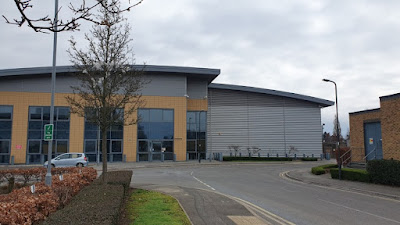 |
| March 2023 |
(PCW 2 September 1982 page 5)
 |
| THE TIMES Tuesday March 15 1983 page 21 |
It was massive. We brough a 10 acre site and filled it. It was assembly lines. It was warehousing and storage and offices. It was absolutely huge.
 |
| September 2023 |
It is huge. Too huge to fit into a single photograph. The ex-Commodore factory proved disappointingly resistant to getting any sort of decent angle on the building. I also had trouble locating the place because the address 1 Hunters Way no longer exists. On one side of Hunters Way is a cleared site and on the other sits a corrugated-walled warehouse (which looks remarkably like old photos of the Commodore factory) which houses a company called Advanced Supply Chain Group, address Brakey Road. Which one could it be? I ruled out the cleared site because Streetview showed it used to be the site of a factory called Roquette, and the old images suggested it was an extensive food processing site. I found an old NORTHAMPTONSHIRE TELEGRAPH story about the closure of the Roquette factory which confirmed food processing had taken place there since 1983. The old Commodore factory had to be the building on the other side of the road. The one that really looked like old photographs of the Commodore factory. But how had the address changed? Again Streetview gave me a clue, an old T-junction in the pavement marks where the entrance to the Commodore factory used to be before, at some point in the last 35 years, the entrance shifted to Brakey Road at the back.
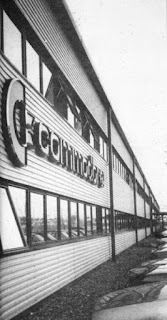 |
| COMMODORE USER February 1985 page 71 |
 |
| ZZAP!64 May 1985 page 26 |
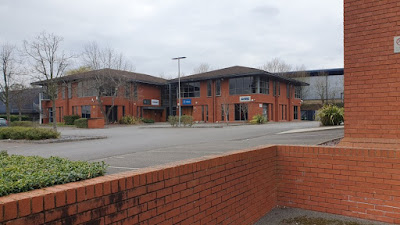 |
| March 2023 |
The Switchback is a small complex of red-brick office buildings about one and a half miles outside Maidenhead town centre. It looks a lot like the various two story red-brick buildings Bullfrog occupied on the Surrey Research Park and I'd be willing to bet they were both built around the same mid-eighties date. Commodore House is a little vague as an address. Fortunately for me COMMODORE COMPUTING INTERNATIONAL went one better in their June 1987 issue and gave the full address as Unit 4. The whole estate is on a fairly gentle hill and, as you can see, I had to lurk behind a wall to take a picture. This was a Sunday. It's a good job no one was at work, I'd have looked like a right weirdo.
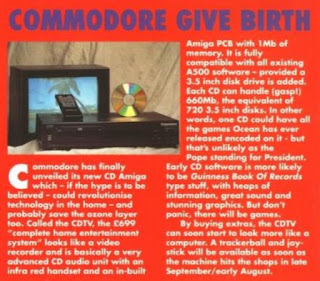 |
| ZERO August 1990 page 8 |
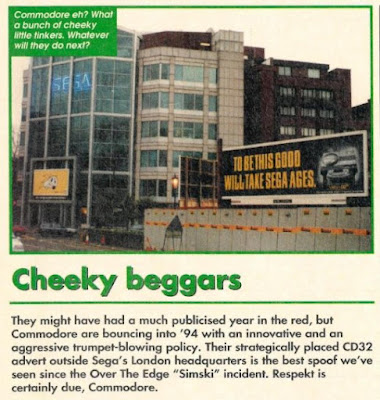 |
| AMIGA ACTION March 1994 page 9 |
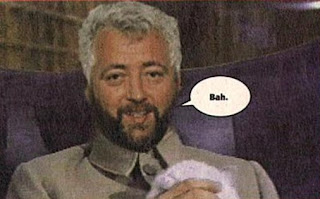 |
| AMIGA POWER June 1995 page 9 |



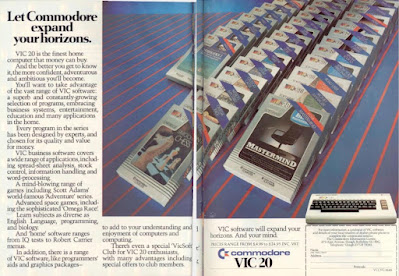








No comments:
Post a Comment